Which of the following types of RNA carries amino acids to the ribosome during protein synthesis?
A. Messenger RNA
B. Ribosomal RNA
C. Transfer RNA
D. Small nuclear RNA
For those aiming to excel in their ATI TEAS test and secure admission into their desired nursing program, ExamGates offers an invaluable resource. Our platform features practice questions meticulously crafted by tutors who have previously aced the exam themselves. With ExamGates, you can access content that is 100% relevant to the test, accompanied by vivid images and illustrations. Additionally, our platform provides comprehensive explanations for both correct and incorrect answers, empowering you to fully grasp the material and optimize your study efforts. Take the first step towards your nursing aspirations with ExamGates today.
Transfer RNA (tRNA) is a type of RNA molecule that carries amino acids to the ribosome during protein synthesis. Each tRNA molecule has a specific sequence of three nucleotides called an anticodon, which pairs with a complementary codon in the messenger RNA (mRNA) sequence. Each tRNA also carries a specific amino acid that corresponds to the codon it recognizes, allowing the ribosome to link the amino acids together in the correct order to form a protein.
In contrast, messenger RNA (mRNA) carries the genetic information from the DNA to the ribosome, where it serves as a template for protein synthesis. Ribosomal RNA (rRNA) is a component of the ribosome itself, where it helps to catalyze the formation of peptide bonds between amino acids. Small nuclear RNA (snRNA) is involved in splicing of pre-mRNA molecules during post-transcriptional processing.
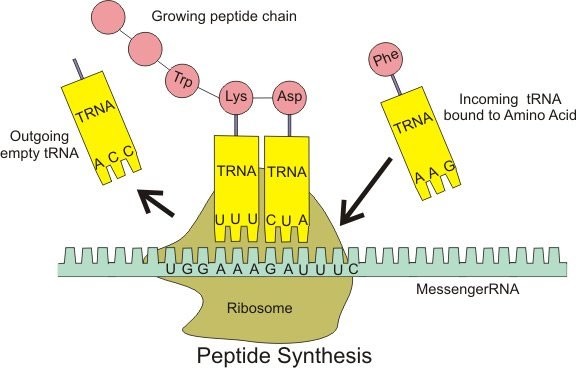 |
Therefore, the Correct Answer is C.
More Questions on TEAS 7 Science Practice Test 3
Question 1:
Which of the following is the process by which DNA is copied into RNA?
A. Replication
B. Transcription
C. Translation
D. Mutation
The Correct Answer is B.Transcription is the process by which DNA is copied into RNA. During transcription, the DNA molecule unwinds and RNA polymerase reads the DNA sequence and synthesizes a complementary RNA molecule using the DNA as a template.
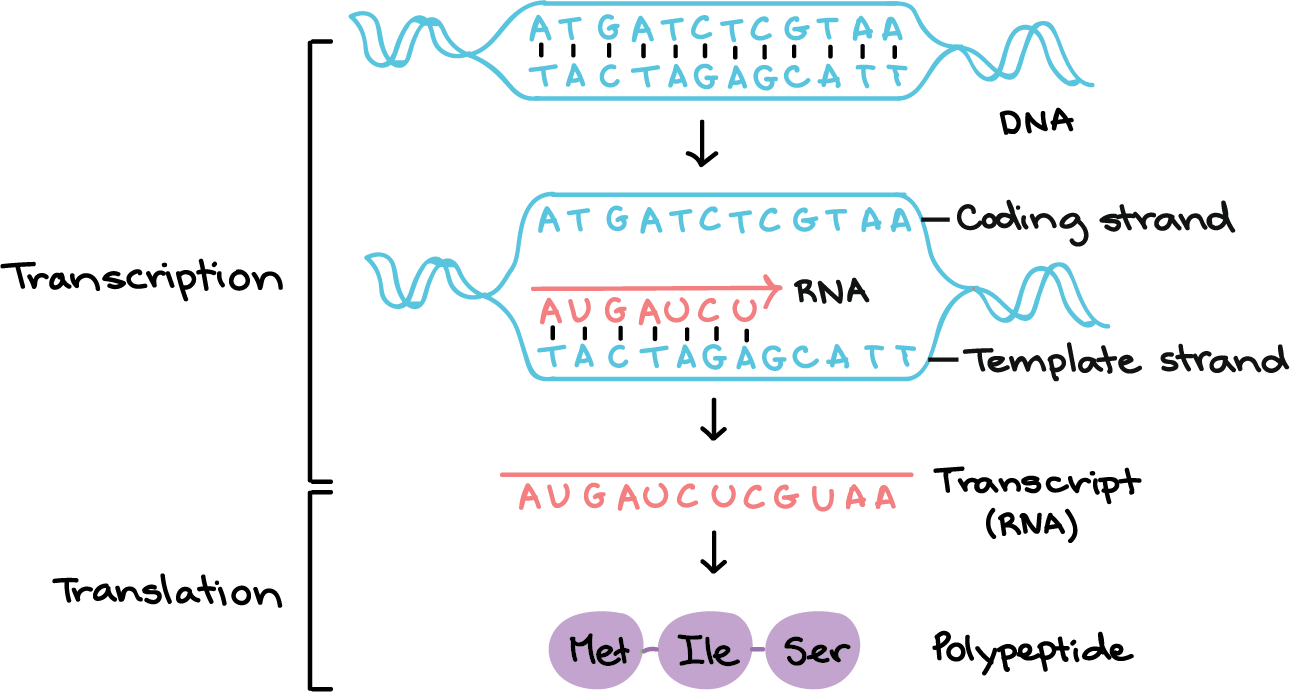
Question 2:
What is the difference between a physical change and a chemical change?
A. A physical change involves the rearrangement of atoms and molecules while a chemical change involves the formation of new substances with different chemical properties.
B. A physical change involves the change of one state of mater to another while a chemical change involves the change of one substance into another.
C. A physical change involves the breaking of chemical bonds while a chemical change involves the breaking of intermolecular forces.
D. A physical change involves the release of energy while a chemical change involves the absorption of energy.
The Correct Answer is A.A physical change is a change that affects the physical properties of a substance, but does not change its chemical identity. Physical changes include changes in state, such as melting or boiling, changes in shape or size, and changes in phase, such as the dissolution of a solid in a liquid. In a physical change, the atoms and molecules of the substance are rearranged, but no new substances are formed.
A chemical change, on the other hand, is a change that results in the formation of new substances with different chemical properties. Chemical changes involve the breaking of chemical bonds between atoms and the formation of new bonds to create new compounds. Chemical changes are usually accompanied by a change in color, the formation of a gas or a solid, or the release or absorption of energy.
Overall, the main difference between a physical change and a chemical change is that a physical change only affects the physical properties of a substance while a chemical change results in the formation of new substances with different chemical properties.
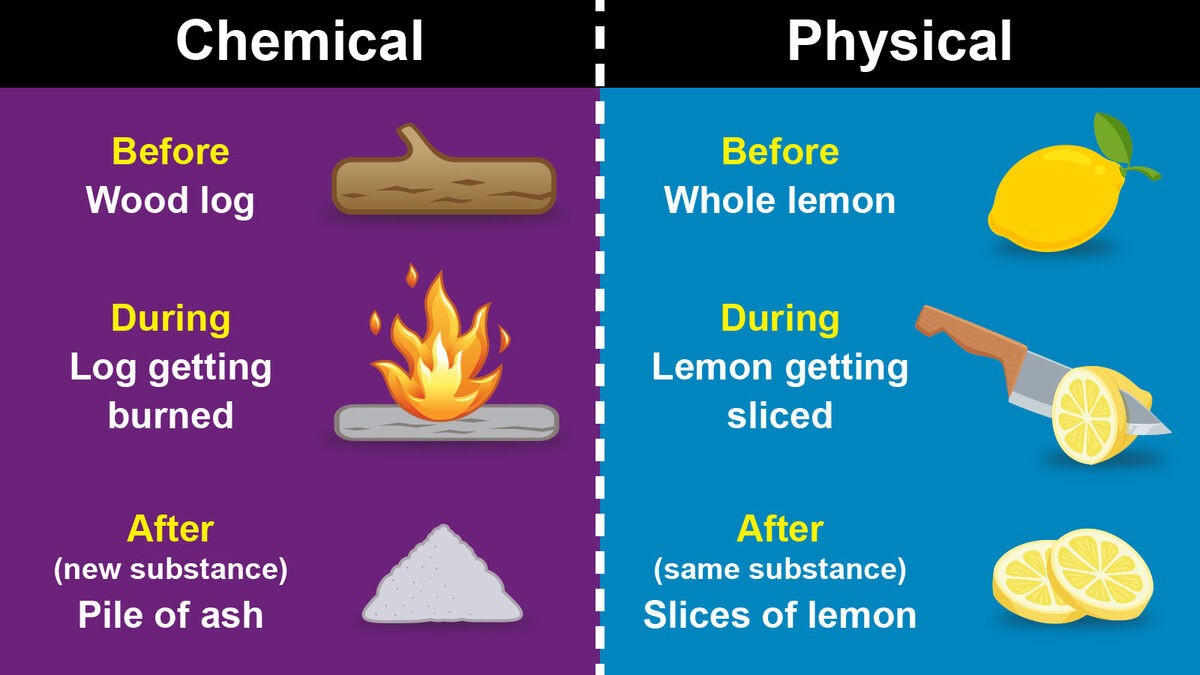 |
Question 3:
Which of the following is a type of genetic mutation that involves the insertion or deletion of one or more nucleotides in a DNA sequence?
A. Silent mutation
B. Nonsense mutation
C. Frameshift mutation
D. Missense mutation
The Correct Answer is C.A frameshift mutation is a type of genetic mutation that involves the insertion or deletion of one or more nucleotides in a DNA sequence. This can cause a shift in the reading frame of the genetic code, resulting in a change in the amino acid sequence of the resulting protein. Frameshift mutations can have significant effects on the function of the protein and can lead to genetic disorders or diseases.
 |
Question 4:
During embryonic development, which of the following germ layers forms the nervous system?
A. Ectoderm
B. Endoderm
C. Mesoderm
D. Exoderm
The Correct Answer is A.The three germ layers that form during embryonic development are the ectoderm, mesoderm, and endoderm. The ectoderm is the outermost layer, and it gives rise to the skin, hair, nails, and nervous system. The nervous system develops from a specialized region of the ectoderm called the neural plate, which invaginates to form the neural tube. The neural tube ultimately gives rise to the brain and spinal cord, which make up the central nervous system, as well as the peripheral nervous system. The endoderm gives rise to the lining of the digestive and respiratory tracts, while the mesoderm gives rise to the musculoskeletal system, circulatory system, and several other organs. The exoderm is not a germ layer and does not exist during embryonic development.
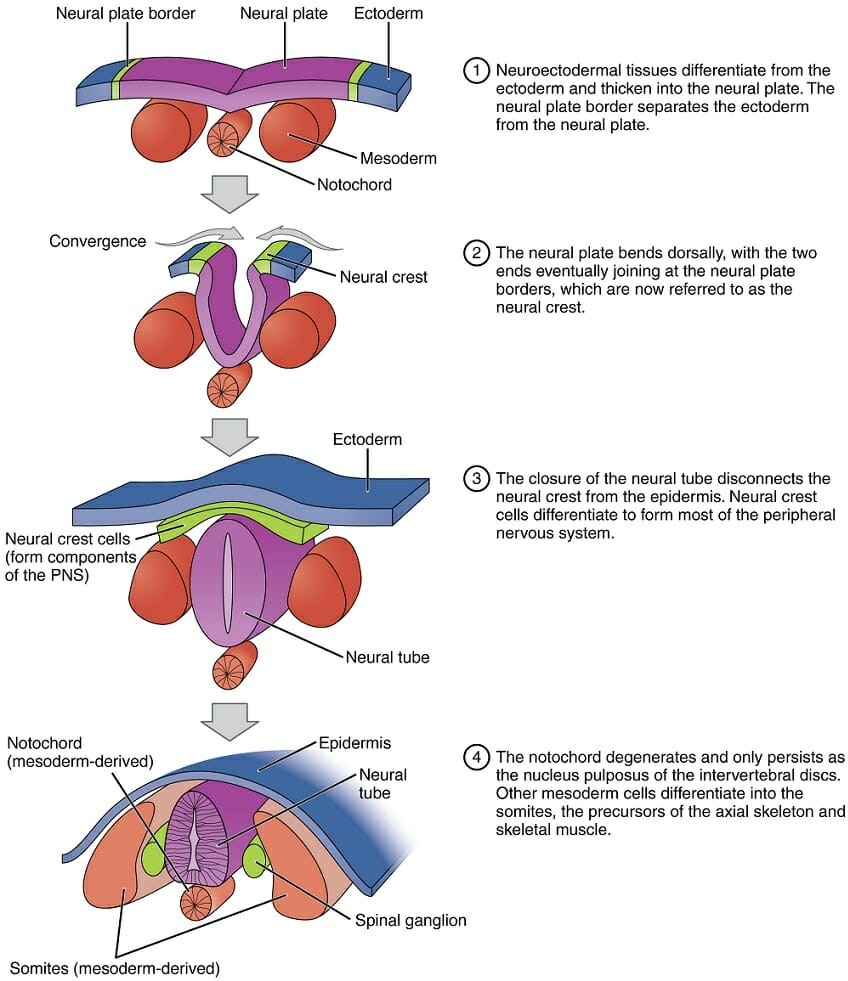
Question 5:
What is the difference between innate immunity and adaptive immunity?
A. Innate immunity is present at birth and provides immediate, non-specific protection against pathogens while adaptive immunity is developed over time and provides specific protection against particular pathogens.
B. Innate immunity involves the recognition of specific pathogens while adaptive immunity involves the recognition of general paterns of pathogens.
C. Innate immunity involves the production of antibodies while adaptive immunity involves the activation of phagocytes.
D. Innate immunity is activated by the lymphatic system while adaptive immunity is activated by the circulatory system.
The Correct Answer is A.Innate immunity is the first line of defense against pathogens and is present at birth. It provides immediate, non-specific protection against a wide range of pathogens, including bacteria, viruses, and fungi. Innate immunity involves physical barriers, such as skin and mucous membranes, as well as cellular and molecular components, such as phagocytes and cytokines.
Adaptive immunity, on the other hand, is developed over time and provides specific protection against particular pathogens. It involves the recognition of antigens, which are specific components of pathogens, by immune cells called lymphocytes. The lymphocytes then produce antibodies that are specific to the antigens, allowing for a targeted response to the pathogen. This process takes time to develop, as the immune system needs to encounter the pathogen and mount a response.
Overall, innate immunity provides immediate, non-specific protection while adaptive immunity provides specific protection that is tailored to the particular pathogen. Both forms of immunity work together to protect the body against pathogens.
Question 6:
What is the name of the valve that separates the left atrium and left ventricle in the heart?
A. Aortic valve
B. Mitral valve
C. Tricuspid valve
D. Pulmonary valve
The Correct Answer is B.The mitral valve is located between the left atrium and left ventricle of the heart and helps to regulate the flow of blood between these chambers. It consists of two leaflets or flaps that open and close in response to changes in pressure as the heart beats.
During diastole, when the heart is relaxed and filling with blood, the mitral valve opens to allow blood to flow from the left atrium into the left ventricle. During systole, when the heart contracts to pump blood out of the left ventricle and into the systemic circulation, the mitral valve closes to prevent backflow of blood into the left atrium.
The mitral valve is one of four valves in the heart that help to ensure the unidirectional flow of blood through the heart and the rest of the circulatory system. Problems with the mitral valve, such as mitral valve prolapse or mitral stenosis, can lead to a range of symptoms and complications, including shortness of breath, fatigue, chest pain, and heart failure.
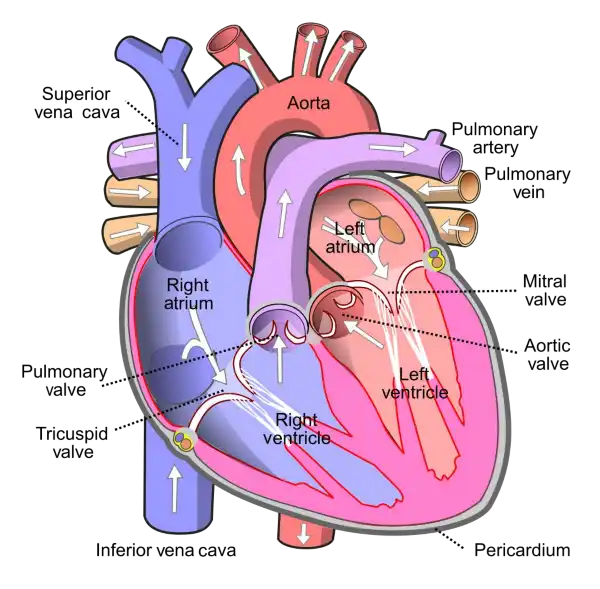 |
Question 7:
What are the steps involved in the scientific method?
A. Observation, hypothesis, prediction, experimentation, analysis, conclusion.
B. Hypothesis, observation, prediction, experimentation, analysis, conclusion.
C. Prediction, observation, experimentation, analysis, conclusion, hypothesis.
D. Observation, data collection, analysis, experimentation, hypothesis, conclusion.
The Correct Answer is A.The scientific method is a systematic approach used to answer questions or test hypotheses about the natural world. The steps involved in the scientific method are:
- Observation: This is the first step in the scientific method. It involves observing a phenomenon or a problem and gathering information about it.
- Hypothesis: After making an observation, a scientist forms a hypothesis, which is a tentative explanation for the phenomenon or problem.
- Prediction: Based on the hypothesis, the scientist makes a prediction about what will happen in an experiment or what they will observe.
- Experimentation: The scientist designs and conducts an experiment to test the hypothesis and prediction.
- Analysis: The data collected from the experiment are analyzed to determine if they support or refute the hypothesis.
- Conclusion: Based on the analysis of the data, the scientist draws a conclusion about whether the hypothesis is supported or refuted.
Option b) is incorrect because it starts with hypothesis before observation. Option c) is incorrect because prediction comes before experimentation. Option d) is incorrect because hypothesis comes after observation and data collection.
 |
Question 8:
What is the role of calcium in muscle contraction?
A. Calcium binds to tropomyosin to expose the myosin-binding sites on actin.
B. Calcium is released from the sarcoplasmic reticulum to initiate the sliding of actin and myosin filaments.
C. Calcium activates the motor neurons to stimulate muscle contraction.
D. Calcium is required for the relaxation of muscles after contraction.
The Correct Answer is B.Muscle contraction is a complex process that involves the interaction between actin and myosin filaments in the muscle fibers. The sliding of these filaments is initiated by the release of calcium ions from the sarcoplasmic reticulum, a specialized organelle in muscle cells. The calcium ions bind to the protein troponin, which causes a conformational change in the troponin-tropomyosin complex, exposing the myosin-binding sites on actin. This allows the myosin heads to bind to actin, forming cross-bridges that pull the actin filaments towards the center of the sarcomere, resulting in muscle contraction.
Option a) is incorrect because calcium does not bind to tropomyosin directly, but rather binds to the protein troponin, causing a conformational change in the troponin-tropomyosin complex. Option c) is incorrect because calcium does not activate motor neurons, but rather is released from the sarcoplasmic reticulum in response to an action potential that travels down the motor neuron to the neuromuscular junction. Option d) is incorrect because calcium is required for muscle contraction, not relaxation. The relaxation of muscles after contraction is due to the active transport of calcium ions back into the sarcoplasmic reticulum, which allows the troponin-tropomyosin complex to return to its resting conformation, blocking the myosin-binding sites on actin and ending the cross-bridge cycle.
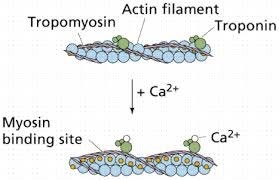
Question 9:
What is the chemical formula for water?
A. H2O
B. CO2
C. NaCl
D. C6H12O6
The Correct Answer is A.The chemical formula for water is H2O. It consists of two hydrogen atoms and one oxygen atom.
 |
Question 10:
What is the largest organ in the human body by surface area?
A. Brain
B. Heart
C. Liver
D. Skin
The Correct Answer is D.The largest organ in the human body by surface area is the skin. It covers the entire external surface of the body and has an average surface area of about 20 square feet in adults.
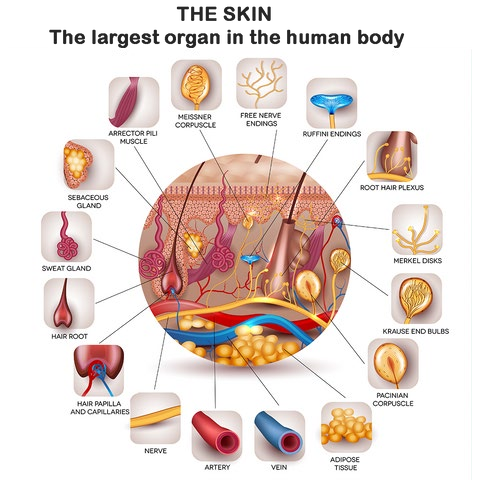 |